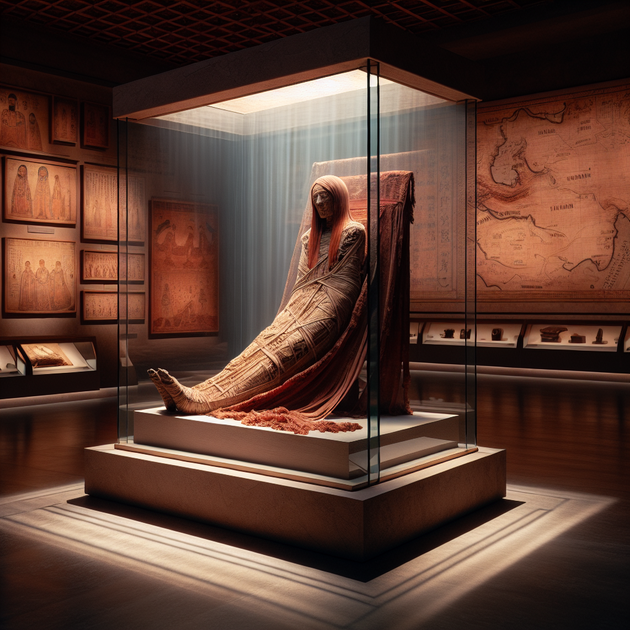Have you ever thought about who really started the mummy trend? Most of us picture Egyptian pharaohs surrounded by gold and pyramids, but here’s a twist—Asian mummies actually go way back, sometimes even earlier than Egypt’s famous embalmed royalty. Let’s unwrap (pun intended) the lesser-known story of how other cultures across Asia were preserving their dead for millennia.
Unveiling Ancient Secrets: The World Beyond Egyptian Mummies
When you hear “mummy,” your mind probably jumps straight to Tutankhamun or Cleopatra. But what if I told you that people in China and other parts of Asia were already mastering the art of preservation while pyramids were still just blueprints? The discovery of Asian mummies has rewritten what we know about ancient burial practices.
In fact, some of these bodies are so well-preserved that scientists can still see their facial expressions or study their last meals! So why did these cultures go to such lengths? And how did they pull it off without all the linen bandages and canopic jars?
How Did Ancient Asians Preserve Their Dead?
The methods weren’t one-size-fits-all—each region had its own twist on body preservation. Here are some fascinating approaches:
- The Tarim Basin Mummies (China): Naturally dried out by the desert air, some are over 4,000 years old and look eerily life-like.
- The Lady Dai (Xin Zhui): Entombed in layers of charcoal and clay in China around 2,100 years ago; her skin is still soft and her veins visible.
- Kokdu Burial (Korea): Bodies sealed in lime-soaked soil to slow decay—a practice dating back to the Joseon Dynasty.
- Buddhist Self-Mummification (Japan): Monks known as Sokushinbutsu carefully dehydrated themselves over years to achieve spiritual preservation.
- Liao Dynasty Tombs (China): Some tombs contained perfectly preserved nobles thanks to airtight coffins and special minerals.
These creative techniques show that the urge to honor ancestors—and maybe cheat death a little—wasn’t exclusive to any one civilization.
What Makes Asian Mummies So Unique?
You might wonder why we don’t hear about these preserved bodies as much as we do about Egyptian ones. Partly it’s because natural conditions like dry deserts or mineral-rich soils played a bigger role than fancy embalming fluids. In places like China’s Tarim Basin or Mongolia’s Gobi Desert, extreme dryness basically freeze-dried bodies for thousands of years.
But there was also intention behind many burials—like Lady Dai or Japan’s self-mummified monks. These weren’t just accidents of climate; people went out of their way with herbs, minerals, and ritual preparations to keep their loved ones (or themselves) intact for centuries.
An Unexpected Find in a Museum Basement
A friend once told me about her visit to a small museum in western China—nothing flashy at first glance. But tucked away in a quiet corner was a glass case holding a mummy from the Tarim Basin. She said its hair was still reddish-blonde after thousands of years! Locals believed these ancient people came from far-off lands because they looked so different from modern residents.
That one mummy sparked her fascination with lost civilizations—and made her realize how much more there is to uncover outside the usual Egyptian tales.
Why Should We Care About Non-Egyptian Mummification?
Learning about Asian mummies isn’t just cool trivia—it tells us about trade routes (like Silk Road interactions), cultural beliefs around death and ancestors, and even daily diets through chemical analysis. Every body unearthed is another piece in humanity’s giant puzzle.
Plus, it reminds us not to let one civilization steal all the spotlight! People everywhere have been finding creative ways to remember and respect their dead since time began.
So next time someone brings up King Tut at a party, you’ve got some surprising facts ready to share—and maybe inspire others to look eastward for more fascinating stories.
What would you want scientists to discover if they found an ancient mummy from your hometown?

Leave a Reply